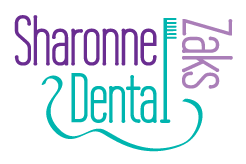wisdom teeth
The biggest issue with wisdom teeth is the lack of space available in the mouth for them to fit. Our jaws have shrunk over the last 50-100 years, partly due to our diets becoming softer; as a result there is not enough space. Wisdom teeth commonly become wedged and stuck, also known as ‘impacted’. Some impacted teeth remain deeply buried and cause no trouble but many cause a range of potentially serious issues as follows.
Problems caused by impacted wisdom teeth:
- Gum Infection/’pericoronitis’: This is very common and usually occurs when the wisdom tooth is partially and not completely through the gum. Plaque (bacteria) and food get caught under the flap of overlying gum which is usually nearly impossible to clean well. Pain, swelling, jaw stiffness and difficulty swallowing can result, along with bad breath and taste. If the infection is severe a fever can develop. The treatment involves thorough cleaning under the gum flap and, ideally to prevent recurrence in the long term, removal of the tooth.
- Pain: This can result from pressure from the wisdom tooth on the neighouring tooth, the gum infection described above, irritation of the jaw joint (TMJ) due the wisdom tooth, decay in the wisdom tooth and several other causes.
- A food and plaque trap: Due to the odd unfavourable angles of impacted wisdom teeth, very commonly food gets wedged down between the wisdom tooth and the neighbouring tooth in front. This food is often impossible to remove and so sits and rots there, usually resulting in decay of either or both teeth. Being so far back and often impossible to clean, wisdom teeth often bring down the gum health of the surrounding teeth by being a plaque trap.
- Damage to the cheeks: Due to the space shortage wisdom teeth grow out at very odd angles, wherever they can. This often means sharp edges rub against the cheeks and cause painful ulcers and callouses.
- Damage to neighbouring molars: Wisdom teeth can exert pressure on the teeth in front and over time this can cause severe damage to the sides of these teeth, creating an ‘erosion cavity’ that is very hard or impossible to fill. Thus there is a risk that these neighbouring teeth may be lost in addition to the wisdom teeth.
- Crowding: This occurs when pressure from the wisdom tooth pushes the neighbouring teeth out of alignment. The pressure is transferred forward and can contribute to crowding of the front teeth. Crowding has been shown to occur regardless of wisdom teeth but wisdom teeth are one well recognised cause.
- Cysts: These are not common but can cause damage. Cysts are fluid filled sacs that can form around the wisdom tooth. They can destroy the bone, damage other teeth and the gums and displace the wisdom tooth.
Assessment and decision to remove wisdom teeth
Any treatment decision is best reached after a process of weighing up the benefits and potential risks. There are risks and benefits of both removing and not removing wisdom teeth and no hard and fast rules. The decision is always yours and my role is to arm you with all the relevant information to allow you to be fully informed. After assessing your situation I will make specific recommendations tailored to you.
To evaluate the wisdom teeth an x-ray called an ‘OPG’ is used. This shows the space available, the size and shape of the wisdom tooth crown and roots, any existing decay or damage and the proximity to important structures like nerves running nearby. It also allows the difficulty of extraction to be assessed and the best approach and timing to be planned.
Options for the extraction of wisdom teeth:
Like any other teeth there is a huge range in the degree of difficulty of extracting wisdom teeth. I manage a lot of complex cases in the surgery as this is one of my big interest areas and passions. If it is beyond me I will refer you to a specialist oral surgeon to manage the job; whatever is in your best interests.
It is possible to remove wisdom teeth in 3 ways:
1) Under local anaesthetic in the dental chair: the simplest, most cost effective and least invasive approach. This is the best way if possible.
2) Under local anaesthetic plus a sedative relaxant: this may involve taking a tablet like Valium or inhaling a sedating gas to help you relax during the procedure. You are awake but less aware of the surgery.
3) Under general anaesthetic: this option is only possible with an oral surgeon specialist and involves going to hospital for half a day , usually a morning. This option is ideal for very complex extractions of wisdom teeth and for people who dont want to be awake at all during the procedure.
The extraction may be a ‘standard’, ‘sectional’ or ‘surgical’ in type.
It is necessary to thoroughly evaluate the full medical and dental histories as part of the early planning stage, including all medications and allergies. It is essential to know about any bad reactions to any medications (eg antibtiotics, anaesthetics), bleeding disorders, possible pregnancy and more.
